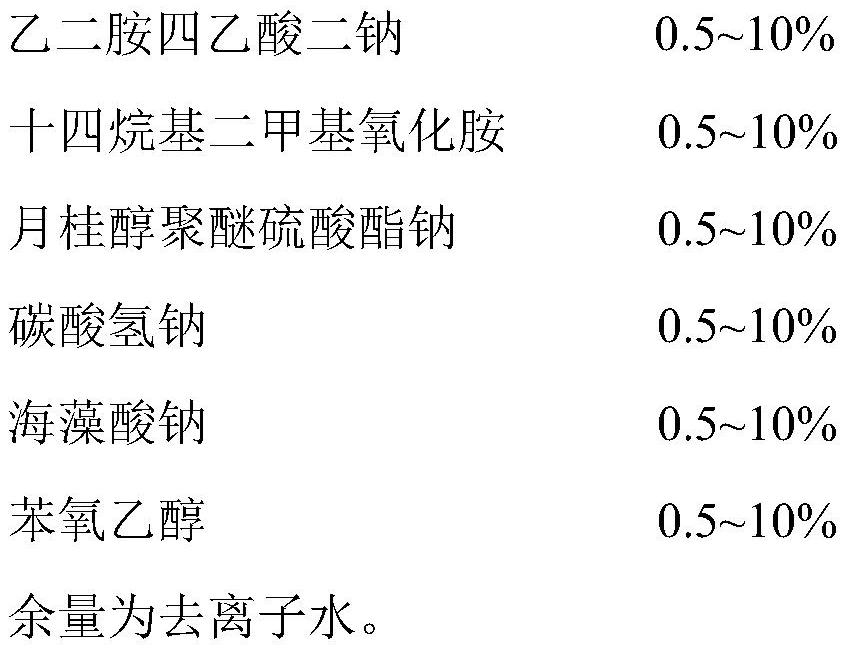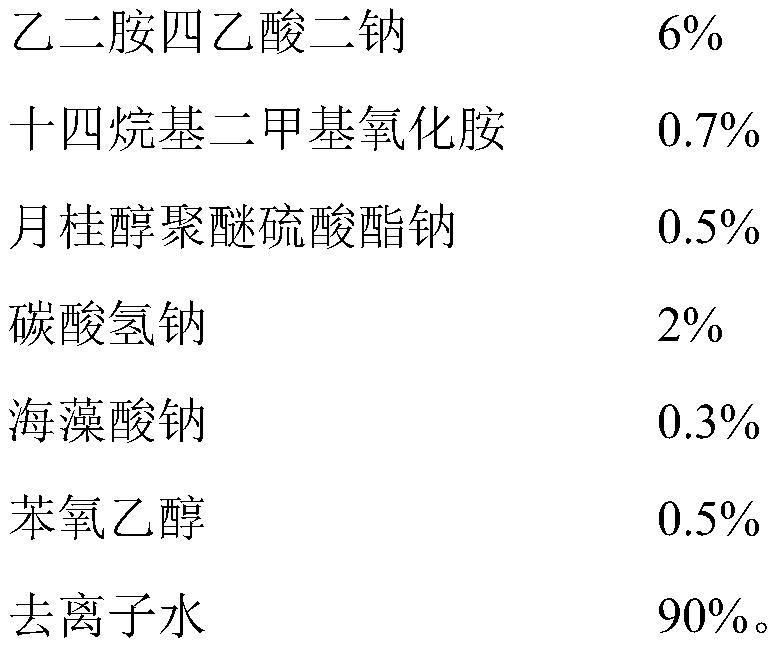Decontamination wet tissue for radionuclide contaminated skin and application
A radionuclide decontamination technology, applied in the direction of skin diseases, skin care preparations, cosmetic preparations, etc., can solve secondary damage and other problems, achieve less secondary pollution, good decontamination effect, and reduce damage Effect
- Summary
- Abstract
- Description
- Claims
- Application Information
AI Technical Summary
Problems solved by technology
Method used
Image
Examples
Embodiment 2
[0040] Example 2 The decontamination efficiency measurement of the decontamination wet tissue to the radionuclide-contaminated skin
[0041] 1. Establishment of skin model
[0042] Small fragrant pigs were intraperitoneally injected with 40mg / kg sodium pentobarbital, and the skin was prepared. 60 co 2+ 、Sr 2+ 、Cs +solution, diluted to 10 4 Bq / mL, take 300 μL of the poisoned solution and apply it evenly in a 5cm×5cm area, and let it dry naturally for 5 minutes.
[0043] 2. Preparation of decontamination wipes
[0044] Prepare decontamination wipes with different components, and divide them into groups A, B, C, D, and E according to different decontamination solutions. Group A: distilled water; B: 6% disodium edetate; C: 0.7 % tetradecyl dimethyl amine oxide; D: 0.5% sodium laureth sulfate; E: 2% sodium bicarbonate; F: mixed solution formula group. Each group soaked the non-woven fabric separately.
[0045] 3. Decontamination effect test
[0046] Take each group of deco...
Embodiment 3
[0052] Example 3 Decontamination method optimization of decontamination wet wipes to radionuclide-contaminated skin
[0053] 1. The effect of different wiping methods on the decontamination effect
[0054] Combined with the characteristics of decontamination of radioactively contaminated skin, it is not allowed to wipe back and forth, and it is not allowed to wipe from areas with high pollution to areas with low pollution. Therefore, the time and method of decontamination wet wipes and contaminated skin will have a greater impact on the decontamination effect. The wiping method is the same as 3 in Example 2. Unfold the decontamination wipes, lay them flat on the skin, squeeze them gently and then wipe them in one direction. See Table 2 for the effects of different squeezing times on the decontamination rate.
[0055] Table 2: Decontamination rate (%) of radionuclides with different extrusion times
[0056]
[0057] The results show that the decontamination effect of wiping...
PUM
 Login to View More
Login to View More Abstract
Description
Claims
Application Information
 Login to View More
Login to View More - R&D
- Intellectual Property
- Life Sciences
- Materials
- Tech Scout
- Unparalleled Data Quality
- Higher Quality Content
- 60% Fewer Hallucinations
Browse by: Latest US Patents, China's latest patents, Technical Efficacy Thesaurus, Application Domain, Technology Topic, Popular Technical Reports.
© 2025 PatSnap. All rights reserved.Legal|Privacy policy|Modern Slavery Act Transparency Statement|Sitemap|About US| Contact US: help@patsnap.com



